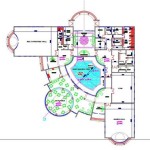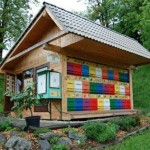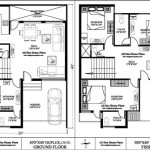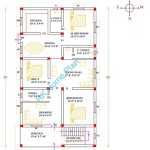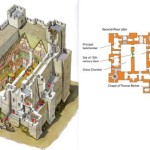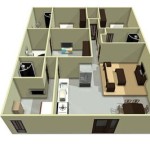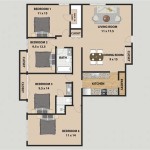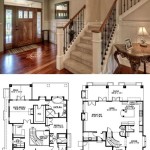Earth Sheltered Homes Floor Plans: Sustainable and Energy-Efficient Designs
Earth sheltered homes, also known as earth bermed homes or underground homes, are designed to minimize energy consumption and maximize energy efficiency. These homes are partially or completely covered by soil, which provides natural insulation and protection from extreme weather conditions. Earth sheltered homes have become increasingly popular in recent years due to their environmental and economic benefits. ### Benefits of Earth Sheltered Homes 1.Energy Efficiency:
Earth sheltered homes are inherently energy-efficient due to their thermal mass. The soil surrounding the home acts as a natural insulator, helping to maintain a constant indoor temperature. This reduces the need for heating and cooling systems, resulting in lower energy consumption and utility bills. 2.Thermal Comfort:
Earth sheltered homes provide excellent thermal comfort. The soil's insulation properties help to maintain a steady indoor temperature, making the home feel warm in the winter and cool in the summer. This can be particularly beneficial for individuals with respiratory or cardiovascular issues who are sensitive to temperature fluctuations. 3.Natural Disaster Resilience:
Earth sheltered homes are more resistant to natural disasters such as hurricanes, tornadoes, and earthquakes. The soil covering provides structural support and protection from high winds and seismic activity. These homes can also provide shelter during extreme weather events, such as blizzards and heat waves. 4.Environmental Sustainability:
Earth sheltered homes are considered to be more environmentally sustainable than traditional homes. The reduced energy consumption and reliance on renewable energy sources minimize the home's carbon footprint and contribute to a cleaner environment. Additionally, the soil covering helps to protect the surrounding landscape and reduce erosion. ### Common Floor Plans for Earth Sheltered Homes Earth sheltered homes can be designed with a variety of floor plans to suit different needs and preferences. Some common floor plan options include: 1.Single-Story Floor Plans:
Single-story earth sheltered homes are designed with all living spaces on one level. This type of floor plan is suitable for individuals or families who prefer a simple and efficient layout. Single-story homes are also more accessible for individuals with mobility challenges. 2.Multi-Story Floor Plans:
Multi-story earth sheltered homes have two or more levels, with living spaces distributed across the different floors. These homes offer more flexibility and can accommodate larger families or individuals who desire separate living and sleeping spaces. 3.Split-Level Floor Plans:
Split-level earth sheltered homes have a combination of one-story and two-story sections. This type of floor plan is ideal for homes built on sloping terrain, as it allows for different levels of living spaces to be connected while maintaining easy access between them. ### Design Considerations for Earth Sheltered Homes When designing an earth sheltered home, several important factors need to be taken into account: 1.Site Orientation:
The orientation of the home on the building site is crucial for maximizing energy efficiency. The home should be positioned to take advantage of passive solar heating by facing south in the Northern Hemisphere and north in the Southern Hemisphere. Proper orientation can reduce the need for artificial heating and cooling. 2.Window Placement:
Windows should be strategically placed to allow for natural lighting and ventilation. South-facing windows are ideal for maximizing solar heat gain, while north-facing windows provide diffused light and reduce heat loss. 3.Thermal Mass:
The thermal mass of an earth sheltered home plays a vital role in its energy performance. Materials with high thermal mass, such as concrete and stone, can absorb and store heat, helping to regulate indoor temperatures. 4.Insulation:
Proper insulation is essential for earth sheltered homes to minimize heat loss and maintain energy efficiency. Insulation materials should be carefully selected to suit the specific needs of the home's design and location. 5.Ventilation:
Earth sheltered homes require proper ventilation to ensure good indoor air quality and prevent moisture buildup. Mechanical ventilation systems or passive ventilation strategies, such as cross-ventilation, can be used to maintain adequate airflow. ### Conclusion Earth sheltered homes offer numerous advantages in terms of energy efficiency, thermal comfort, natural disaster resilience, and environmental sustainability. With careful planning, design, and construction, earth sheltered homes can provide comfortable, energy-saving, and environmentally friendly living spaces.
26 Luxury Hiline Home Plans Underground Homes Earth Sheltered House

House Plan 10416 Earth Sheltered Style With 3427 Sq Ft 3 Bed

Earth Sheltered Passive Home Plan

Icf House Plans For A Green Earth Sheltered 4 Bedroom Home

Lovely Underground Home Plans 4 House Homes Earth Sheltered

Sutherlands Complete Home Package The Earth Shelter

Icf House Plans For A Green Earth Sheltered 4 Bedroom Home

House Plan 97254 Ranch Style With 1559 Sq Ft 3 Bed 2 Bath

Cedar Haven Home Design Earth Sheltered 3 4 Br Ba Homes Underground House Plans

House Plan 10376 Retro Style With 2139 Sq Ft 3 Bed 2 Bath

